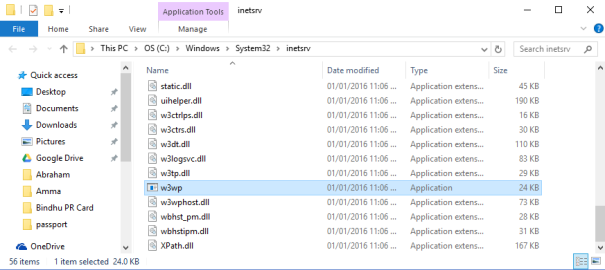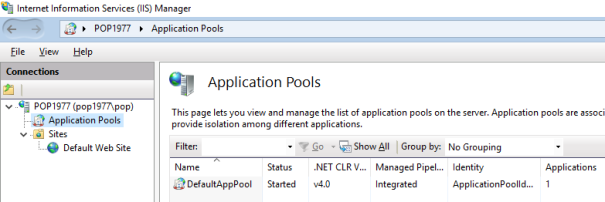The ASP.NET Request is processed by IIS with the help of Worker Process. (w3wp.exe). The following article will help you to understand the role of worker process and App Pool when serving an ASP.NET request.
1. Worker Process
2. Application Pool
Worker Process:  Worker Process (w3wp.exe) runs the ASP.Net application in IIS. This process is responsible to manage all the request and response that are coming from client system. All the ASP.Net functionality runs under the scope of worker process. When a request comes to the server from a client worker process is responsible to generate the request and response. In a single word we can say worker process is the heart of ASP.NET Web Application which runs on IIS.
Worker Process (w3wp.exe) runs the ASP.Net application in IIS. This process is responsible to manage all the request and response that are coming from client system. All the ASP.Net functionality runs under the scope of worker process. When a request comes to the server from a client worker process is responsible to generate the request and response. In a single word we can say worker process is the heart of ASP.NET Web Application which runs on IIS.
Application Pool: Application pool is the container of worker process. Application pools is used to separate sets of IIS worker processes that share the same configuration. Application pools enables a better security, reliability, and availability for any web application. The worker process serves as the process boundary that separates each application pool so that when one worker process or application is having an issue or recycles, other applications or worker processes are not affected. This makes sure that a particular web application doesn’t not impact other web application as they they are configured into different application pools.
Application pool is the container of worker process. Application pools is used to separate sets of IIS worker processes that share the same configuration. Application pools enables a better security, reliability, and availability for any web application. The worker process serves as the process boundary that separates each application pool so that when one worker process or application is having an issue or recycles, other applications or worker processes are not affected. This makes sure that a particular web application doesn’t not impact other web application as they they are configured into different application pools.
Application Pool with multiple worker process is called “Web Garden”.
Now let’s have look how IIS process the request when a new request comes up from client.
If we look into the IIS 6.0 Architecture, we can divided them into Two Layer
1. Kernel Mode
2. User Mode
Now, Kernel mode is introduced with IIS 6.0, which contains the HTTP.SYS. So whenever a request comes from Client to Server, it will hit HTTP.SYS First.
Now, HTTP.SYS is Responsible for passing the request to particular Application pool. Now here is one question, How HTTP.SYS comes to know where to send the request? This is not a random pickup. Whenever we creates a new Application Pool, the ID of the Application Pool is being generated and it’s registered with the HTTP.SYS. So whenever HTTP.SYS Received the request from any web application, it checks for the Application Pool and based on the application pool it send the request.
So, this was the first steps of IIS Request Processing.
Till now, Client Requested for some information and request came to the Kernel level of IIS means at HTTP.SYS. HTTP.SYS has been identified the name of the application pool where to send. Now, let’s see how this request moves from HTTP.SYS to Application Pool.
In User Level of IIS, we have Web Admin Services (WAS) which takes the request from HTTP.SYS and pass it to the respective application pool.
When Application pool receive the request, it simply pass the request to worker process (w3wp.exe) . The worker process “w3wp.exe” looks up the URL of the request in order to load the correct ISAPI extension. ISAPI extensions are the IIS way to handle requests for different resources. Once ASP.NET is installed, it installs its own ISAPI extension (aspnet_isapi.dll) and adds the mapping into IIS.
Note : Sometimes if we install IIS after installing asp.net, we need to register the extension with IIS using aspnet_regiis command.
When Worker process loads the aspnet_isapi.dll, it start an HTTPRuntime, which is the entry point of an application. HTTPRuntime is a class which calls the ProcessRequest method to start Processing.
Note: The worker process “w3wp.exe” looks up the URL of the request in order to load the correct ISAPI extension. ISAPI extensions are the IIS way to handle requests for different resources. Once ASP.NET is installed, it installs its own ISAPI extension (aspnet_isapi.dll) and adds the mapping into IIS.
I hope you have got an understanding on the Request process flow in ASP.NET.
Happy Programming.

